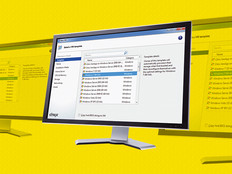To mitigate the risk of data exfiltration, IT managers must take three actions: segment and isolate networks, apply appropriate access control policies, and back up those policies with technology. In some cases, this also means challenging long-held notions regarding academic freedom and internet security and negotiating with campus stakeholders to find an acceptable level of risk.
Segmentation and Isolation Can Make Data Exfiltration More Difficult
The first step toward reducing the risk of exfiltration is to appropriately segment the network and isolate different types of network users from each other.
Start with segmentation in campus data centers, especially where each individual department has its own small data center, so that servers are identified and isolated. How far to take this is a matter of resources and application engineering. Aim to microsegment each server with an individual firewall controlling inbound and outbound traffic. Most data center managers, both in higher ed and enterprise environments, find that an iterative approach works best. Start with big chunks and increase the level of segmentation and isolation as you learn more about the application load and the tools being used.
Meanwhile, major IT vendors are taking on the issue of microsegmentation in their data center network hardware, which makes it easy to slowly increase the level of segmentation by augmenting the switches, routers, firewalls, gateways and software you already have.
RELATED: Why data center optimization helps improve security and reduce costs.
Options for segmenting users
Segmentation is also important on the user side, and there are many different approaches. It’s likely that IT managers have already taken steps to segment the user side of their networks.
While smaller campuses can use physical topology to implicitly identify different network segments, most higher education IT managers will prefer to implement (or have already implemented) some type of network access control or identity-driven networking, also called identity-based networking. Though this can be taken to an extreme, IT leaders have found that mixing a central authentication or identity and access management service with virtual local area network steering usually provides enough granularity to identify and apply security policies to end users.
For the purposes of reducing the risk of data exfiltration, it makes sense to concentrate on the server side of the network. An infected on-campus user workstation might lead to lateral movement of bad actors when it connects to a server. However, higher ed has been at the forefront of implementing technologies such as NAC, which means that the most likely area to improve isolation is going to be in the data center.
Building and Enforcing Appropriate Data Security Policies
Segmentation and isolation are not goals in and of themselves. They are preliminary steps toward building policies to mitigate data exfiltration risk.
IT managers are already familiar with incoming policies, so let’s focus on outgoing policies. It’s likely that you’re blocking outbound email (Simple Message Transfer Protocol port 25/ Transport Control Protocol) except from official campus mail servers and relays. You may have been doing this since the 1990s.
For exfiltration, there are three main avenues an attacker can choose from: standardized encrypted protocols, nonstandard protocols and steganographic techniques. All are difficult to detect and block without considerable collateral damage.
Click the banner below to find out how a modern data platform can transform your university.












